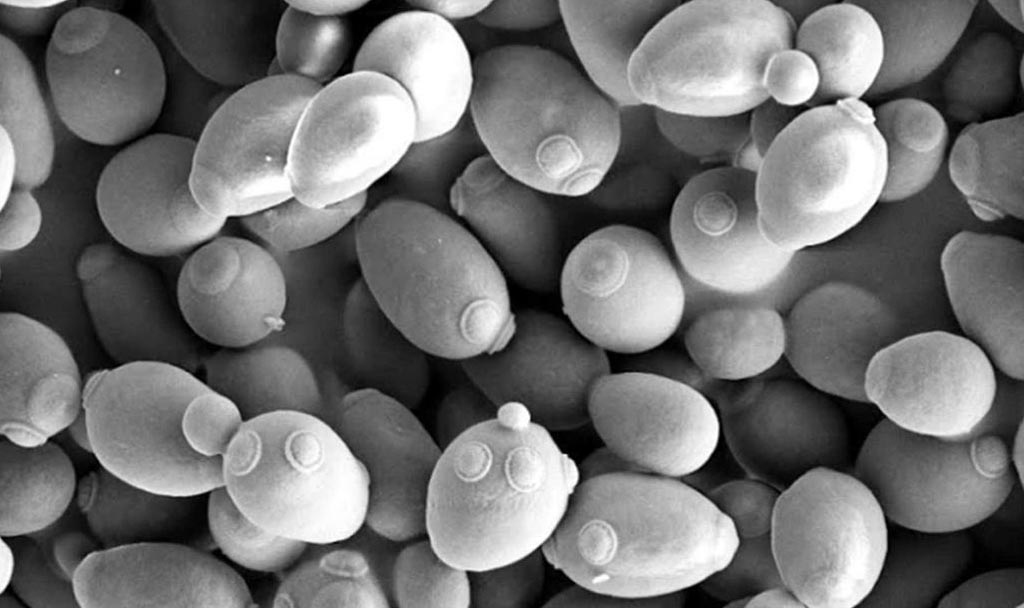Modified CRISPR/Cas9 Identifies Genes that Protect against PD
By LabMedica International staff writers
Posted on 25 Oct 2017
A team of molecular biologists working with a yeast model of Parkinson's disease (PD) used a modified version of the CRISPR/Cas9 genome-editing tool to identify genes that protect against the toxicity of the PD protein alpha-synuclein.Posted on 25 Oct 2017
CRISPR/Cas9 is regarded as the cutting edge of molecular biology technology. CRISPRs (clustered regularly interspaced short palindromic repeats) are segments of prokaryotic DNA containing short repetitions of base sequences. Each repetition is followed by short segments of "spacer DNA" from previous exposures to a bacterial virus or plasmid. CRISPRs are found in approximately 40% of sequenced bacteria genomes and 90% of sequenced archaea. CRISPRs are often associated with cas genes that code for proteins related to CRISPRs.

Image: A scanning electron microscope (SEM) image of the Parkinson\'s disease model yeast Saccharomyces cerevisiae (Photo courtesy of Wikimedia Commons).
Since 2013, the CRISPR/Cas system has been used in research for gene editing (adding, disrupting, or changing the sequence of specific genes) and gene regulation. By delivering the Cas9 enzyme and appropriate guide RNAs into a cell, the organism's genome can be cut at any desired location. The conventional CRISPR/Cas9 system is composed of two parts: the Cas9 enzyme, which cleaves the DNA molecule and specific RNA guides that shepherd the Cas9 protein to the target gene on a DNA strand.
For the current study, investigators at the Massachusetts Institute of Technology (Cambridge, MA, USA) modified the CRISPR/Cas9 complex by deactivating the Cas9 enzyme's cutting ability and engineering the protein so that after binding to a target site, it recruited transcription factors (proteins that activate genes).
CRISPR is normally used to edit or delete genes from living cells. However, the MIT team adapted it to randomly turn on or off distinct gene sets across large populations of cells, allowing the researchers to identify genes from the yeast Saccharomyces cerevisiae, which has been extensively used as a model to systematically study and identify genes involved in neurodegenerative diseases that protected the cells from a protein associated with Parkinson's disease.
The modified gene-editing tool was named PRISM (Perturbing Regulatory Interactions by Synthetic Modulators). It emerged as a screening platform that used randomized CRISPR/Cas transcription factors to globally perturb transcriptional networks.
The investigators reported in the October 5, 2017, issue of the journal Molecular Cell that by applying PRISM to a yeast model of Parkinson’s disease (PD), they identified guide RNAs (gRNAs) that modulated transcriptional networks and protected cells from alpha-synuclein (alphaSyn) toxicity. One gRNA identified in this screen outperformed the most protective suppressors of alphaSyn toxicity reported previously.
"What we decided to do was take a completely unbiased approach where instead of targeting individual genes of interest, we would express randomized guides inside of the cell," said senior author Dr. Timothy Lu, associate professor of electrical engineering, computer science, and biological engineering at the Massachusetts Institute of Technology. "Using that approach, can we screen for guide RNAs that have unusually strong protective activities in a model of neurodegenerative disease.
The state of the art right now is targeting two or three genes simultaneously and then looking at the effects, but we think that perhaps the gene sets that need to be modulated to address some of these diseases are actually broader than that."
Related Links:
Massachusetts Institute of Technology








 (3) (1).png)




